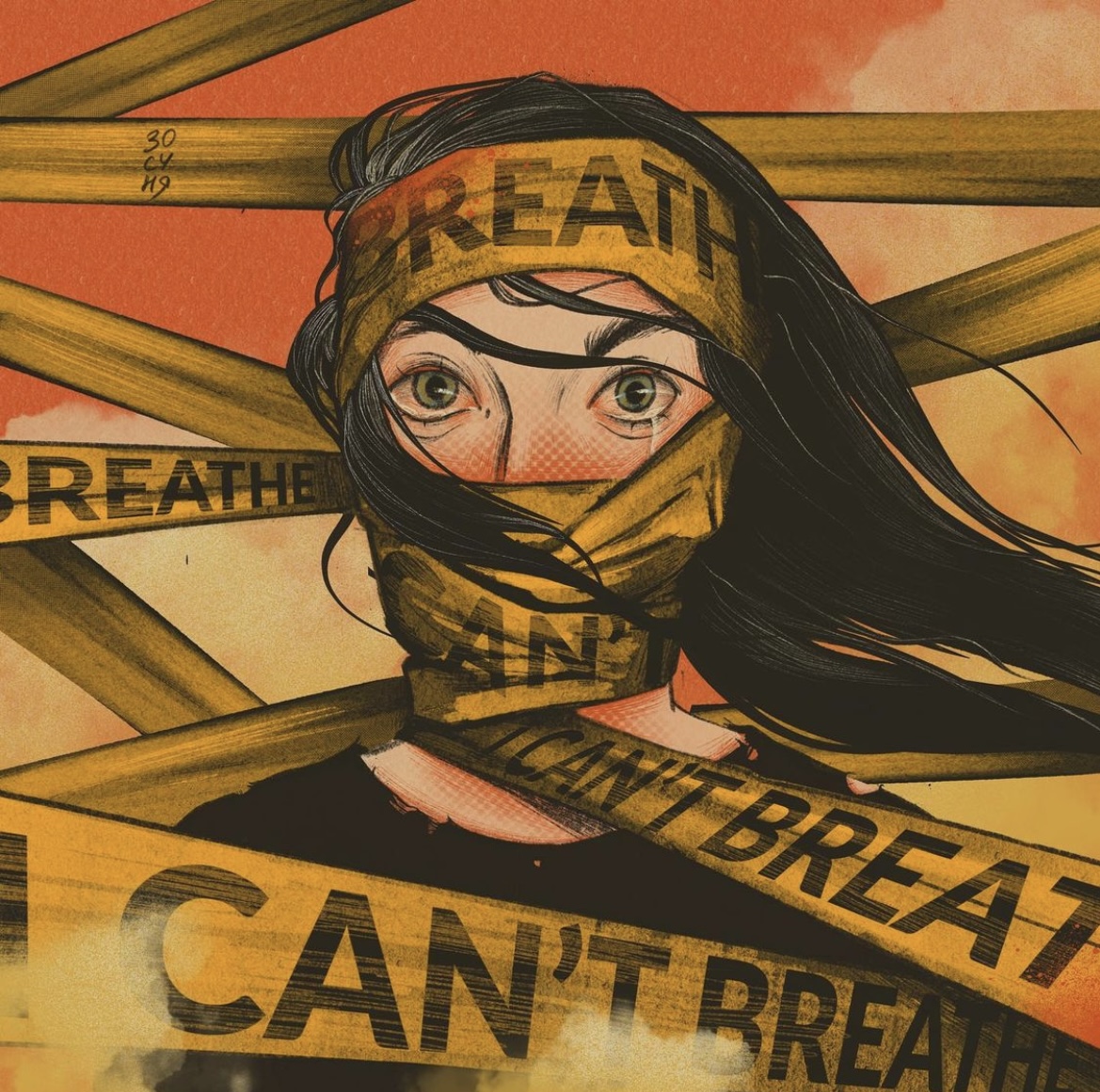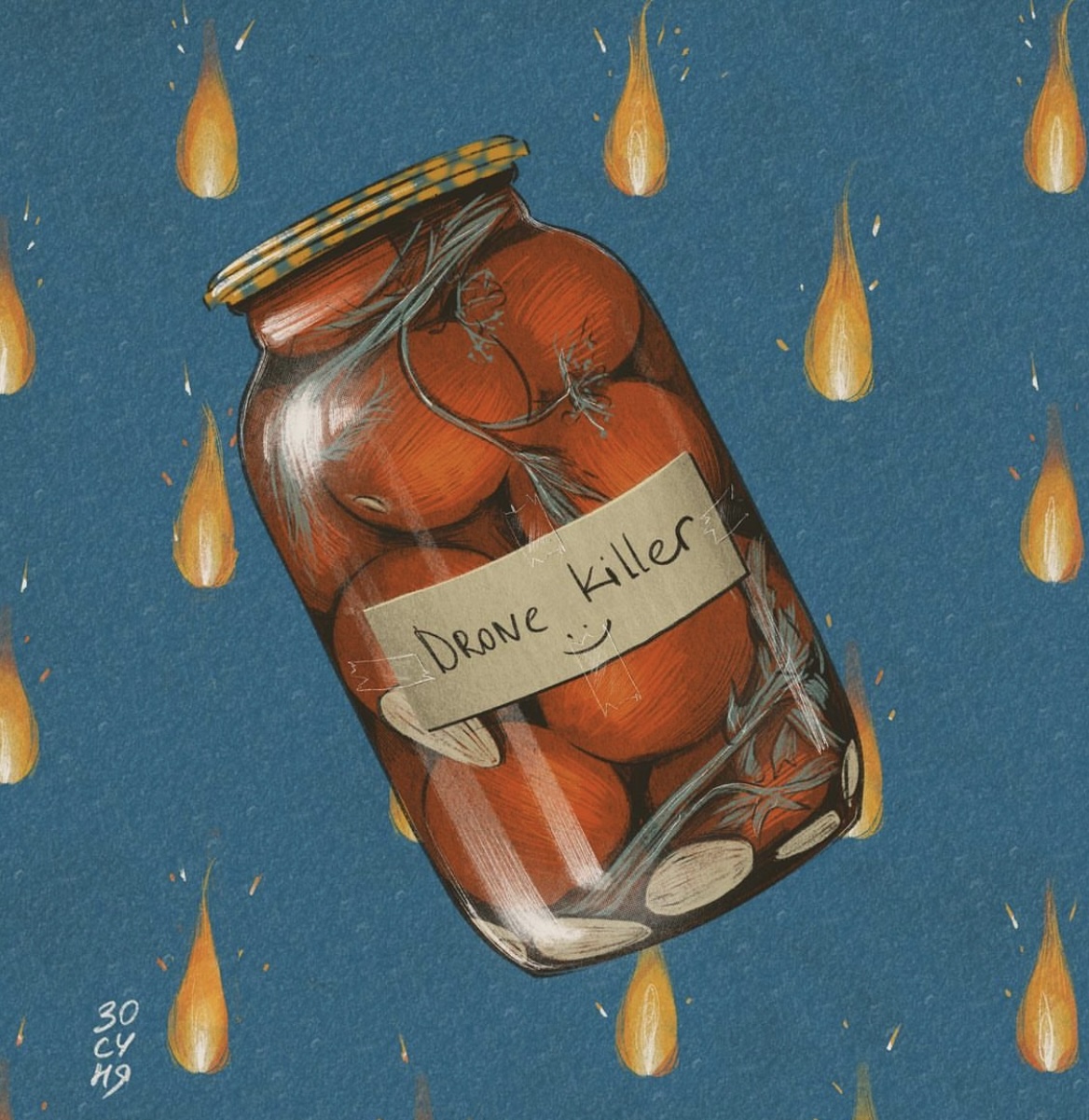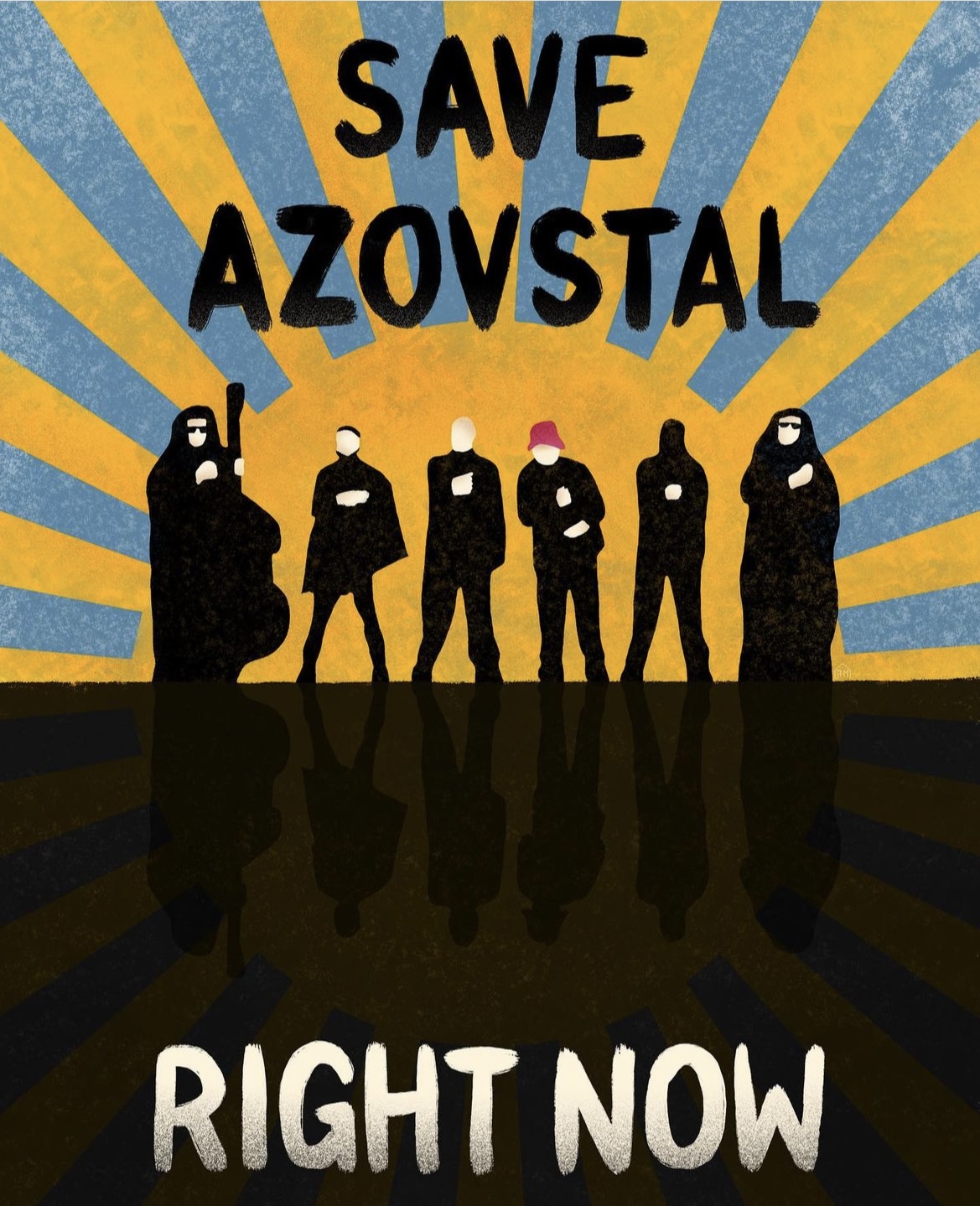Artists around the world are using their talents to protest against policies and conflicts they do not agree with. Today, art has become a powerful tool in Ukraine, where artists have used all mediums, from traditional art forms to street installations of empty strollers, to call attention to the pain and destruction caused by the Russian invasion.
“Now Ukrainian art is loud. It found its voice. And its place began to take shape,” Ukrainian artist Kateryna Savchuk told Chai Khana. “Ukrainian art has always been powerful, but it was more private. Now its borders are expanding. It influences the art of other countries indeed.”
For some Ukrainian artists, the war has become a kind of catalyst to explore new genres and use art as a form of activism.
For example, the war motivated artist Sophia Suliy to start working with digital illustration. Now she is using the medium to try to create a dialogue through her work with the audience in wartime. “Art is a kind of dialogue. Art can be different and influence people in various ways, for example, propaganda is a kind of art as well. With my work, I cannot say that I will make global changes, but I can help people to express their opinion,” she says.
Ukrainian artists are part of a larger, global trend of artists seeking a platform and a voice to influence the events and policies that concern them—from the artists supporting the Black Lives Matter movement in the US to Armenian artists turning art into protest.
“Changes though the art is a long process. You cannot push people to do something, but you can spread awareness,” notes Angela Hovakimyan, an Armenian artist and activist. “For example, for me activism art is to show the problem from the other side and help people to find the solution. Art is to help society to see the issues and problems from a new light and perspective.”
A street artist, Hovakimyan uses her art to start conversations.
“My art is what I want to say to people and how I can be in touch with them,” she says.
“Conversation through art should have a place, especially with the new generation. We can have a conversation to not lose the opportunity to talk. But we should remember that this should be about the conversation, there is no correct opinion.”
Suliy, the digital media artist, says she sees her work as a way to “push” people into reconsidering long-held ideas.
“My paintings can become the last straw for people, so they can change their position or my works can be the first straw, so people can at least doubt their thoughts,” she says, noting that can be the foundation for bigger changes.
“I see my works are touching sensitive themes for a lot of people. I know that I can push them to rethink their strong position. A lot of different people are texting me and sometimes it is not really good comments. I received comments from Russians too. They do not like what I am doing, and they are asking for empathy. I do not like it much, but at least I see that the dialogue is possible.”




Illustrations by Sophia Suliy
Liza (Yablonska) Mykhailus thinks that art through activism is “primarily a way of self-expression.”
“But in addition to this, it can have an impact. My opinion can have an impact,” she says.
“Art is a very good tool for attracting attention. Because we not only hear it with our ears, we see it with our eyes. Because of visual perception, we feel something at the same time. It causes certain emotions. And this is an important component in attracting attention to a certain problem.”
Two Ukrainians, Khrystyna Oryshchak and Vasyl Slobodian, saw people’s responses to art about the war and realized the work being created was an evolving archive of the country’s experiences and loss. In response, they created Artist against War, an online platform to help artists use their work to raise money for the country and the Ukrainian armed forces.
“Art is always a reaction. It is a response to what is happening in the world. It makes people sympathize and empathize,” Khrystyna Oryshchak says.
It is a very powerful tool of communication outside and between people because sometimes such illustrations are able to attract more attention. They are more understandable, and more engaging on an emotional level than text or photos…It has always been a very strong tool, but during events such as war, it is even more so.”




Illustrations by Liza (Yablonska) Mykhailus
Artist Kateryna Savchuk underscores that art both communicates what is happening and helps viewers understand what they are experiencing.
“Each drawing has a special meaning and touches different feelings,” she says.
“It is important for me to express my feelings about what is happening. It is a language of communication and a tool of reflection to show what is happening in the world.”
This feature story was prepared with support from the Friedrich-Ebert-Stiftung (FES) South Caucasus Regional Office. All opinions expressed are the author’s alone, and do not necessarily reflect the views of FES or Chai Khana.
This Feature Article was produced in the framework of Chai Khana Fellowship program - Summer/Autumn 2022
DONATE NOW

